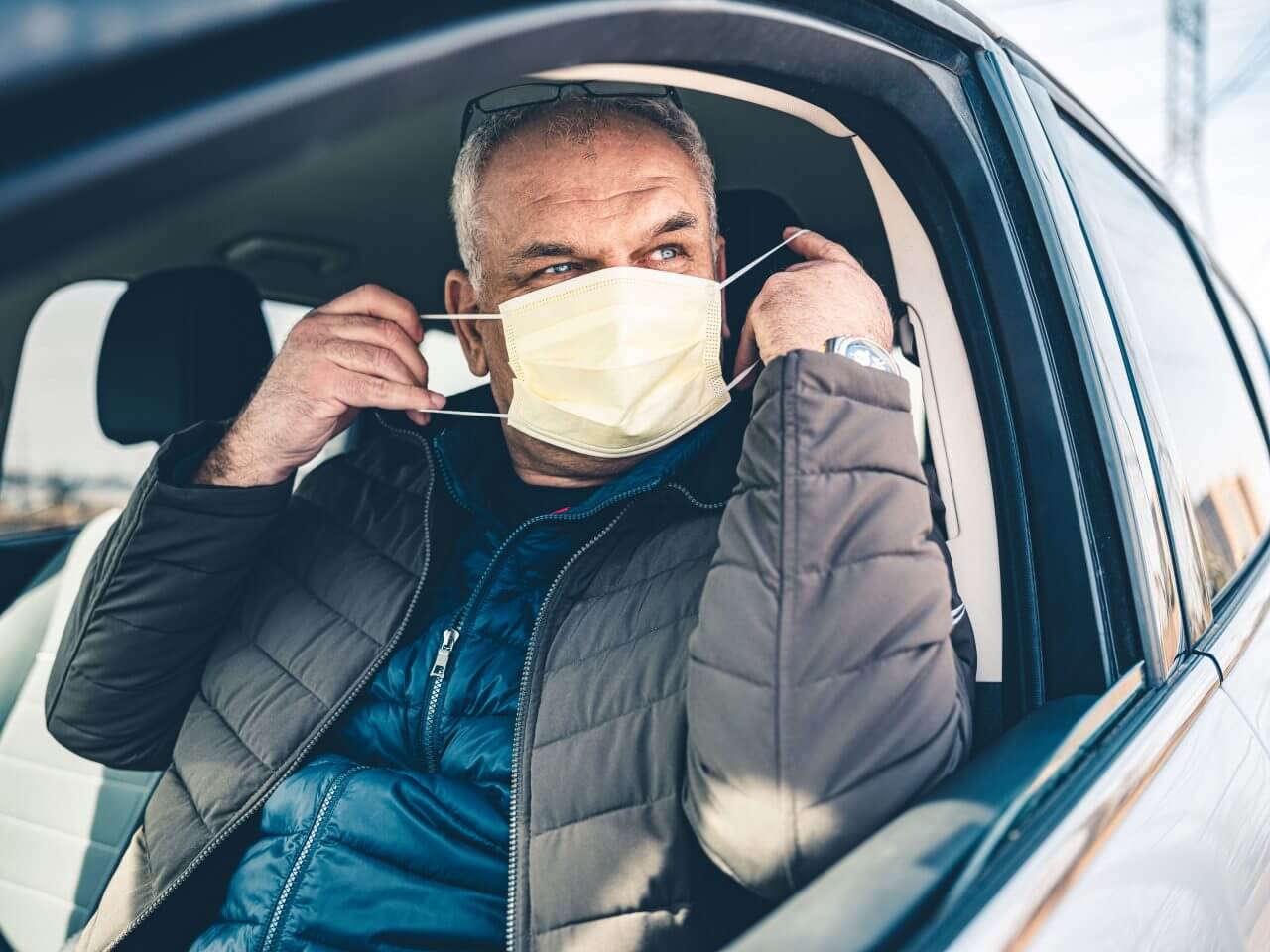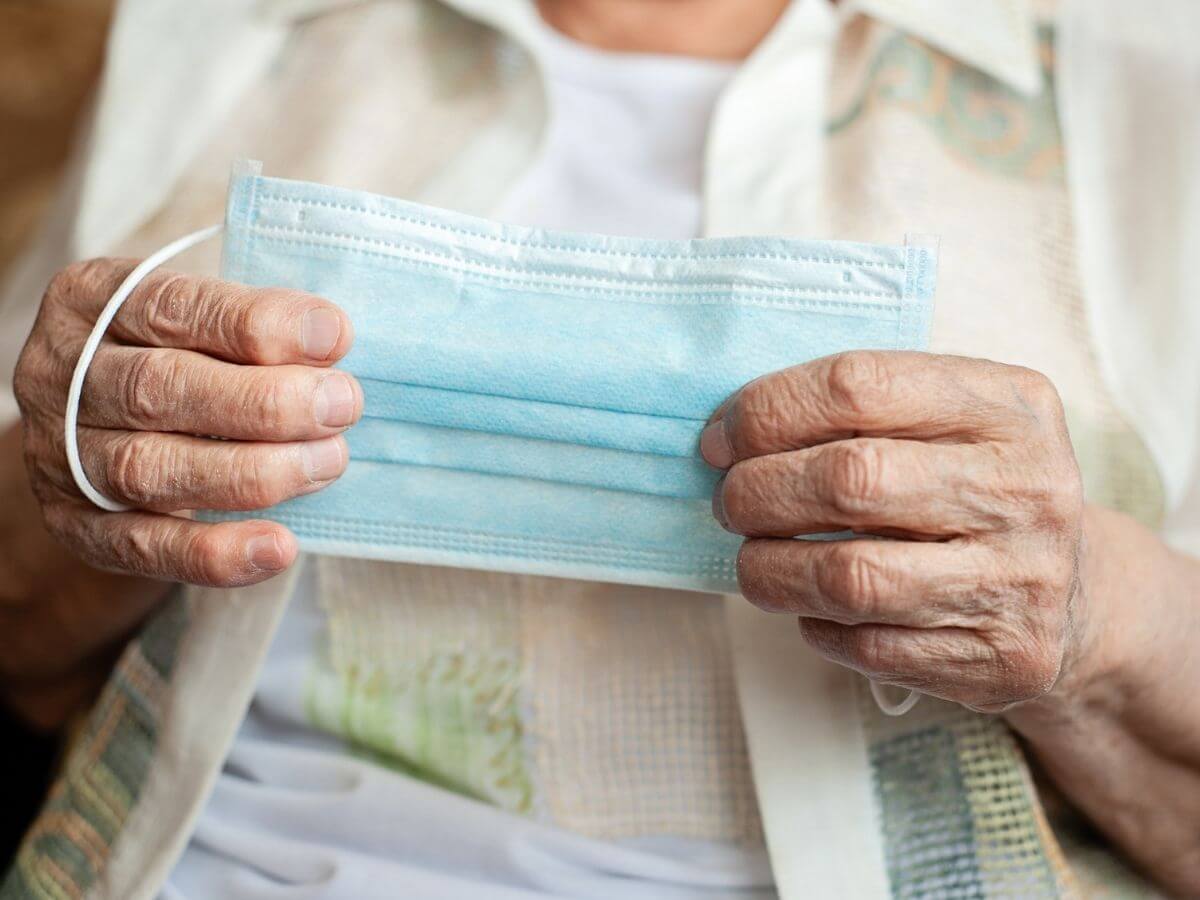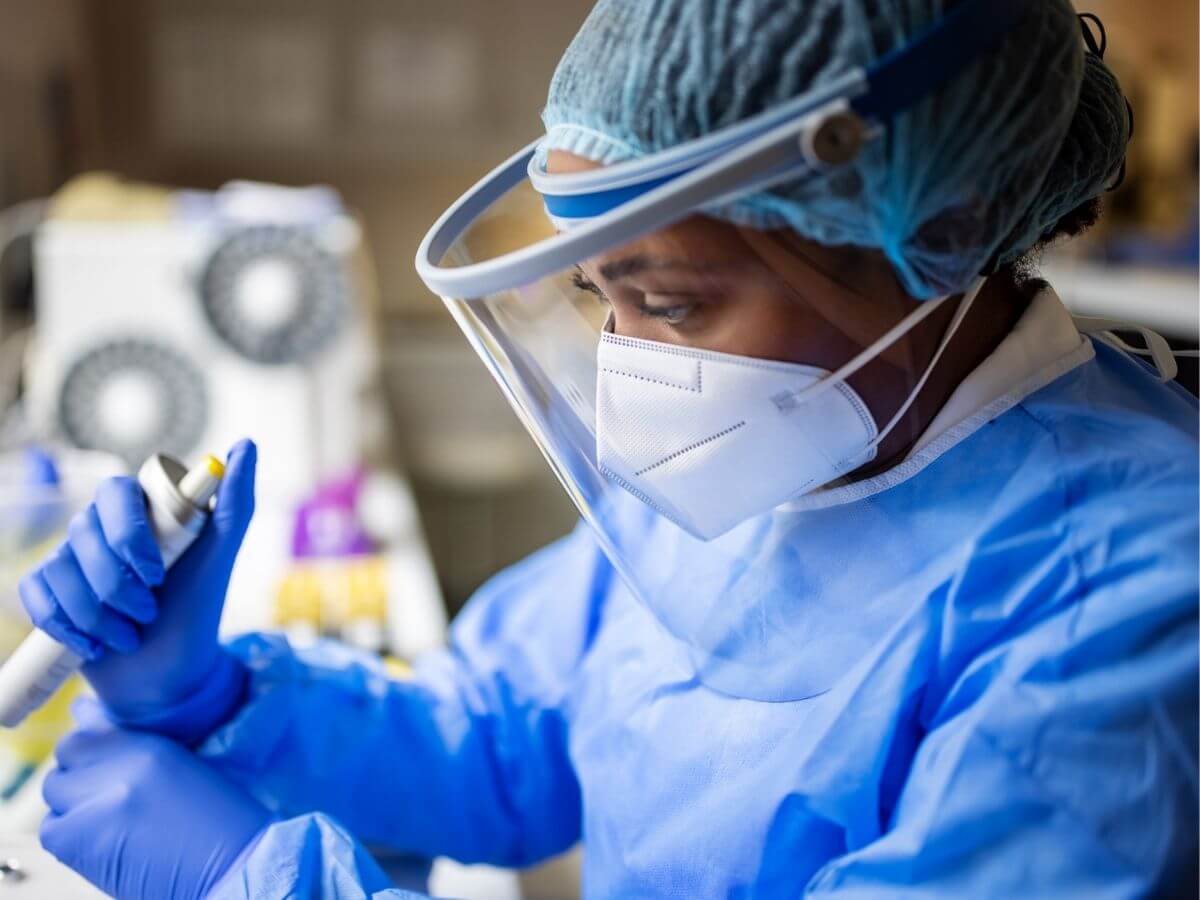Mask Mistakes You May Be Making

Wearing a mask is proven to reduce your risk of contracting or transmitting COVID-19. There’s just one catch: You’ve got to handle and wear your mask the right way.
It’s not surprising that people have gotten a little lax about mask best practices. We’ve been living in a pandemic for nearly two years now, and everyone is ready to throw their mask in a drawer, hopefully, to never wear it again. But the reality is that there will continue to be situations in which masks are a necessity for the foreseeable future.
Plus, even if COVID-19 is no longer a concern at some point, there may be other serious, contagious viral illnesses in the future that require masking. So, it’s good to review how to care for and wear your mask periodically to ensure you’re getting the most benefit from it.
Don’t take a chance with your health.
Getting the COVID-19 vaccine is the best way to prevent COVID-19 infection and end the pandemic. The vaccine cannot give you COVID-19, but it can help protect you from serious illness. Learn more about the COVID-19 vaccine and make a first, third, or booster vaccination appointment at a location near you.
Do Any of These Describe Your Mask Habits?
Avoiding the mistakes below will help ensure that you get all the protection your mask has to offer.
- New cloth masks aren’t washed before wearing them. Your mask is designed to keep virus particles out of your nose and mouth, but it can’t do that if it already has particles on it. Cloth masks should be washed in hot water (160 degrees Fahrenheit) before you wear them.
- Hands aren’t washed before and after putting your mask on. If you grab your mask with potentially virus-covered hands, you can transfer those particles to it, and from the mask directly to your nose and mouth. And in the course of masking up, you’ve probably touched your face, so you should wash your hands or use hand sanitizer at that point.
- Masks aren’t being stored properly when not wearing them. Are there virus particles on the seat of your car, the kitchen table, or your desk at work? The answers are maybe, maybe, and maybe. Why risk it? When you aren’t wearing your mask, put it somewhere you know is clean and where others won’t be breathing on or touching it.
- Your mask doesn’t fit properly. Tighten the straps so that the mask hugs your face firmly. If it has a rigid nosepiece, bend it so that it fits snugly over your nose.
- Your nose and mouth aren’t covered by your mask. Having your mask cover your mouth but not your nose means you’re cheating yourself and those around you out of important protection.
- Cloth masks aren’t washed after every use. Cloth masks aren’t meant to be worn for weeks (or longer) between washings. They should be washed frequently, ideally after every use.
- Disposable masks are worn over and over. Some masks are designed for one-time use. If you wear them beyond that, they may not be protecting you as they should.
- Worn or damaged masks are not replaced. If the elastic won’t hold your mask firmly against your face anymore, or the mask material has deteriorated, it’s time for a new one.
- You remove your mask to talk with others. We’re all struggling to be heard thanks to that layer of fabric in front of our mouths but tugging your mask down during a conversation completely defeats the purpose of it. Speaking slower and enunciating can make it easier for people to understand you when you have your mask on.
Being Properly Masked and Vaccinated Is Your Best Defense
Wearing a mask the right way greatly reduces your risk of contracting COVID-19 or spreading the virus to others. Nobody enjoys being masked, but caring for and wearing your mask properly takes much less time and effort than recovering from a serious respiratory illness.
The other important step you should take to protect yourself is getting vaccinated. Schedule an appointment with Baptist Health.
Next Steps and Useful Resources
Make a Vaccination Appointment
Start a COVID-19 Test Online
Mask Etiquette 101: Things to Consider.
How to Safely Clean Your Mask



